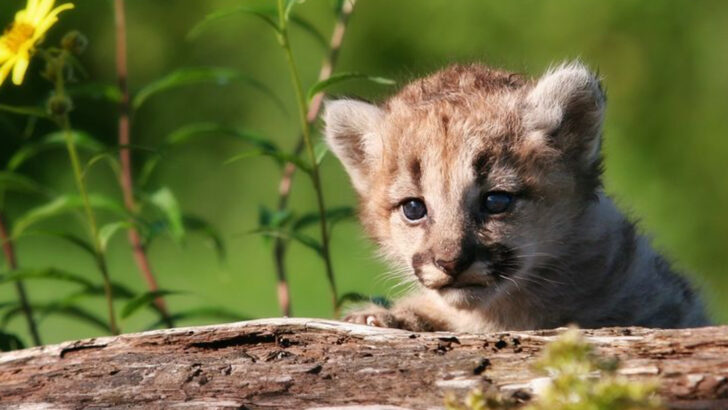Your peaceful walk through the woods could have an unexpected visitor—one with sharp claws, powerful muscles, and eyes locked on its surroundings. Mountain lions are masters of stealth, often watching without ever being seen. But if you know what to look for, the signs of their presence become clear.
Large paw prints in the dirt? A half-eaten deer carcass nearby? Scratches on trees at eye level? These aren’t just random sights—they could be warnings that a big cat is in the area. Recognizing these clues could mean the difference between a casual hike and an unwelcome surprise.
But don’t panic just yet. Mountain lions rarely attack humans, and understanding their behavior is key to staying safe. Whether you’re an outdoor adventurer or just live in mountain lion country, knowing how to react can help keep you and these incredible predators out of harm’s way.
Here’s what to watch for—and what to do if you cross paths with one.
Tracks and Paw Prints
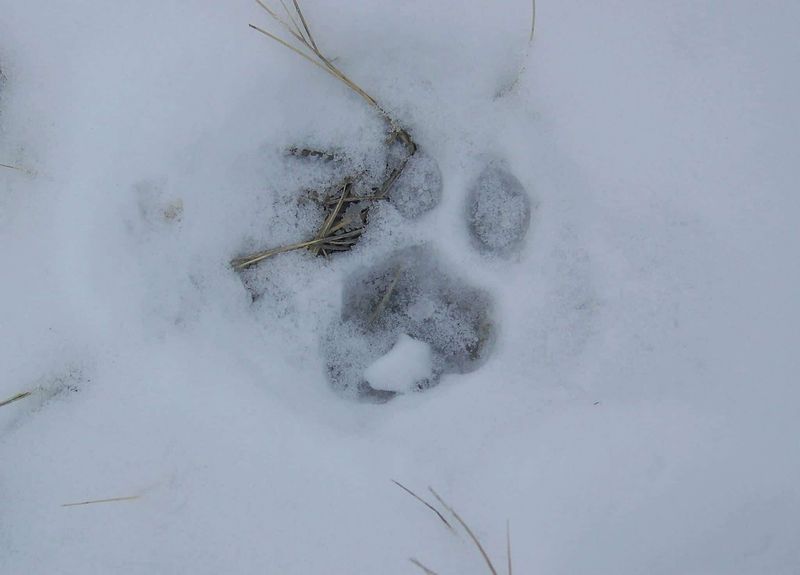
Spotting tracks is one of the clearest indicators of a nearby mountain lion. These tracks typically show a distinctive round shape with four toes and an absence of claw marks due to retractable claws.
Mountain lions have large paws, with the front ones being larger than the rear. This feature helps in identifying them correctly. Look for tracks that are around 3 to 5 inches wide.
If you notice tracks matching this description, stay alert and consider backtracking to avoid a possible encounter. Always carry a map to navigate safely and avoid densely wooded areas.
Scat Evidence
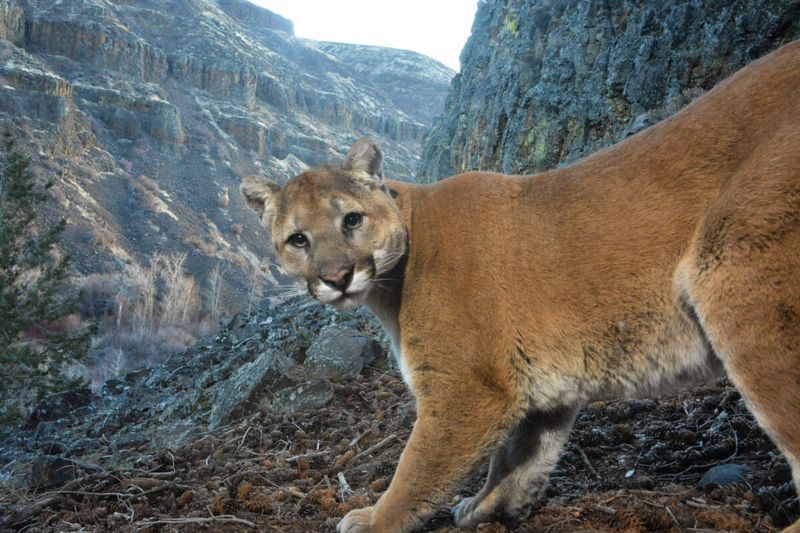
Mountain lion scat is another telltale sign of their presence. It typically appears segmented and cylindrical, often containing hair and bone fragments due to their carnivorous diet.
Scat is usually left in visible places such as trails or dirt roads as a territorial marker. When hiking, if you come across scat that fits this description, exercise caution as it means you’re in their roaming area.
To stay safe, keep to the trails and make noise periodically, alerting any nearby wildlife to your presence and preventing surprising encounters.
Scrape Marks
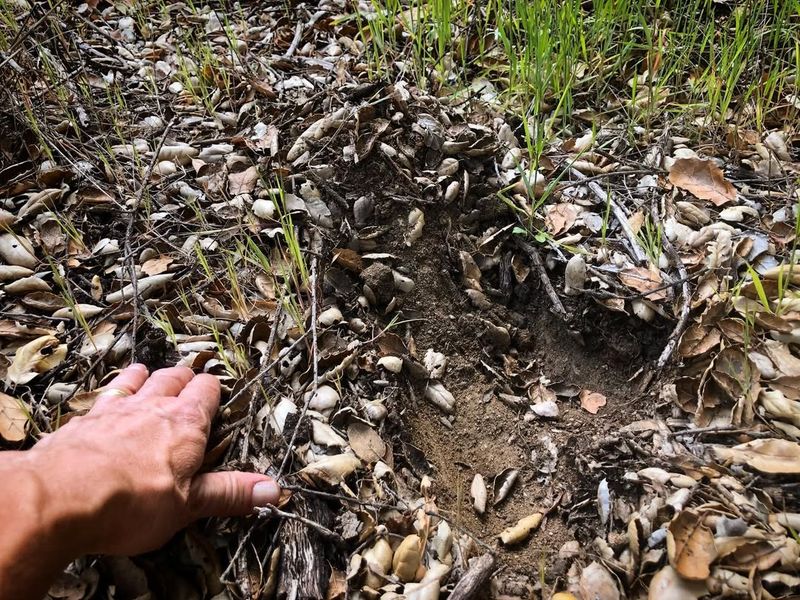
Scrape marks on the ground are another sign to watch for. Mountain lions use their hind legs to scrape together leaves and soil, creating a small mound.
These scrapes are territorial markers, often found along trails or dirt paths. If you spot these signs, it indicates a mountain lion is marking its territory.
To maintain safety, it’s important to avoid these areas. Make your presence known by talking or clapping your hands, thus deterring the animal from following or approaching you during your hike.
Deer Carcass Nearby
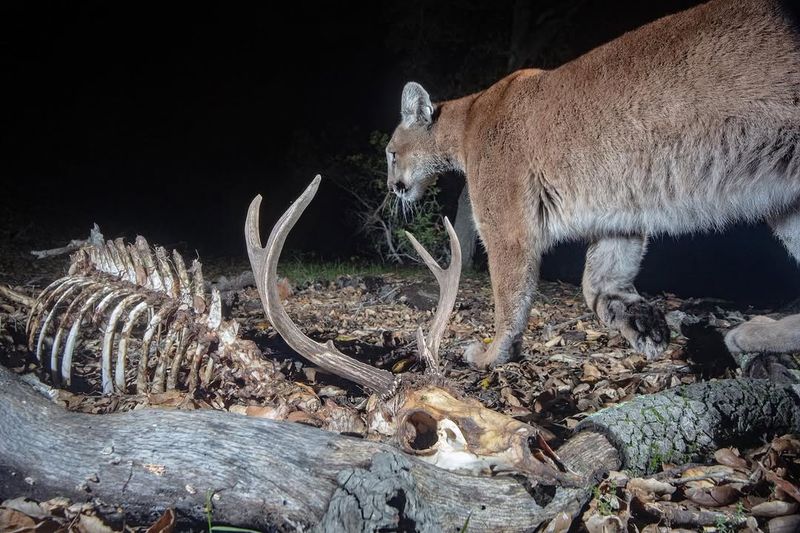
Finding a deer carcass can be a strong indication that a mountain lion is in the vicinity. They often drag their prey to a secluded spot before feeding.
The carcass might have bite marks and could be partially covered with leaves or dirt. This behavior helps preserve the food and hide it from scavengers.
If you encounter such a scene, it’s best to leave the area quickly and quietly. Always remain observant of your surroundings and avoid lingering, as mountain lions are known to return to their kills.
Distinctive Sounds
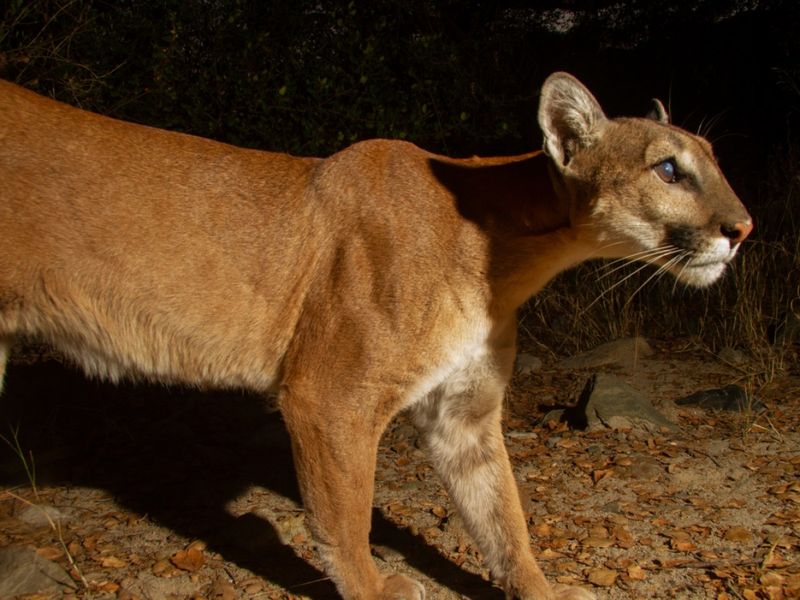
Hearing distinctive sounds, such as low growls, hisses, or chirps, might indicate a mountain lion nearby. These sounds are often used for communication, especially during mating season.
A chirping sound is typically made by females, often heard when they’re calling their young. If you hear this, it’s crucial to be cautious, as cubs might be nearby.
To ensure safety, try to make yourself appear larger and avoid crouching or bending down. Back away slowly, keeping an eye on your surroundings to prevent close encounters.
Mountain Lion Sightings
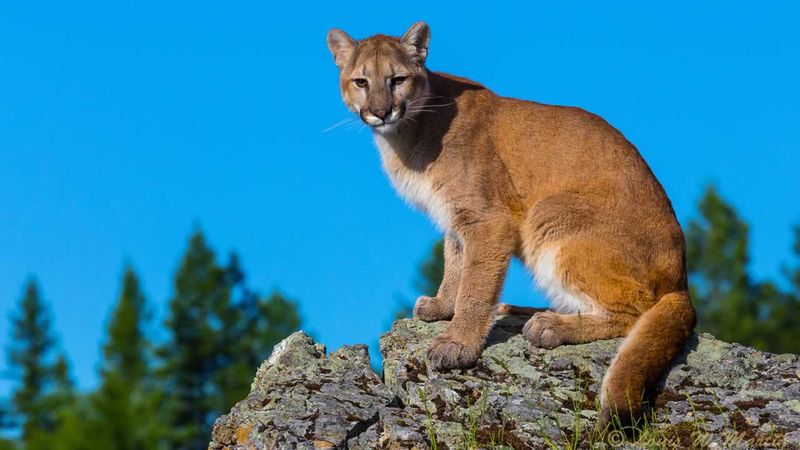
Seeing a mountain lion is an obvious sign of their presence. These animals are elusive and tend to avoid human contact, so a sighting, especially during daylight, is significant.
If you spot one, maintain a safe distance and do not approach it. Most importantly, don’t run; instead, back away slowly while facing the lion.
Make yourself look bigger by holding up your arms or opening your jacket. Speaking loudly and firmly can also help assert your presence, encouraging the lion to move away and reducing the risk of confrontation.
Unusual Pet Behavior
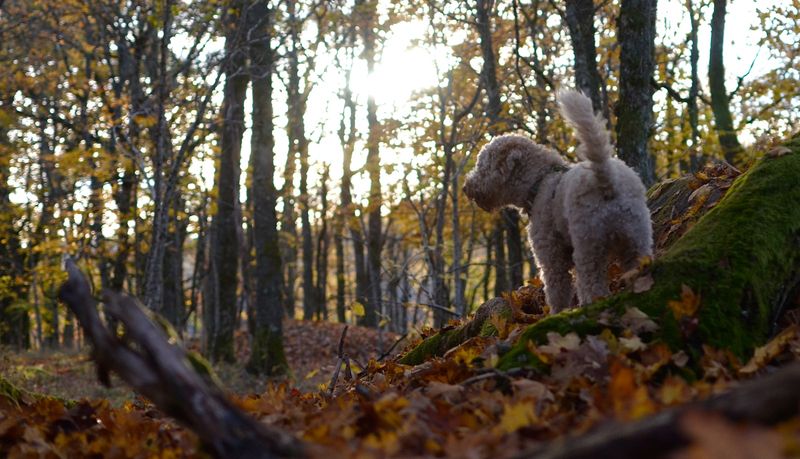
Pets often sense wildlife presence before humans do. If your dog or cat starts behaving anxiously, such as growling, barking, or staring intently at a particular area, it could indicate a mountain lion nearby.
Their acute senses make them aware of the scents and sounds of predators. Pay attention to these signals and be extra vigilant if your pet acts unusually.
To ensure safety, immediately bring your pet indoors or keep them on a leash. Avoid venturing into areas where your pet’s behavior suggests the presence of a wild animal.
Increased Wildlife Activity
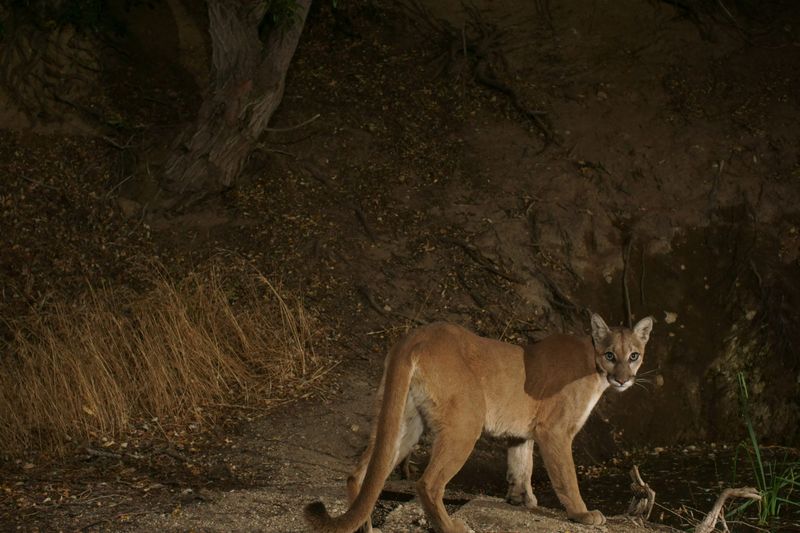
Noticing an increase in wildlife activity can be a subtle sign of a mountain lion’s presence. Animals such as deer, rabbits, or birds may exhibit skittish behavior, fleeing or making alarm calls.
These animals react to the presence of predators and can signal that a mountain lion is nearby. Keep an eye out for these changes, as they can provide early warnings of potential danger.
To reduce risk, stay in groups and make noise while hiking. This will help alert the lion to your presence, reducing the chance of a surprise encounter.
Territorial Markings
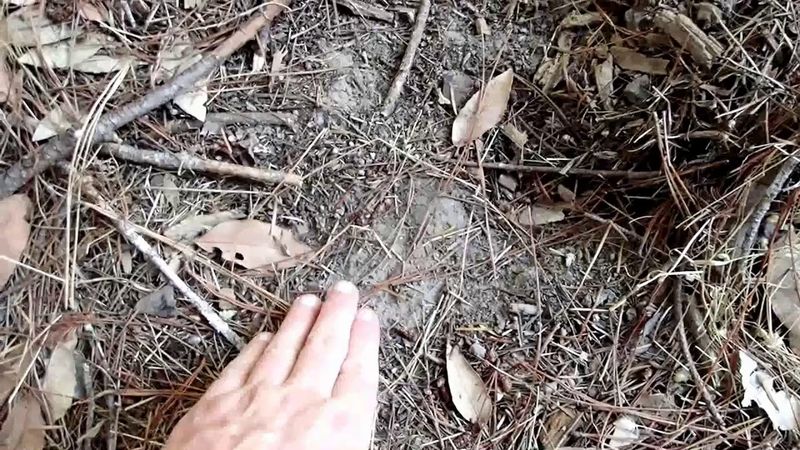
Mountain lions mark their territory using scratches on trees and scent markings. These can be found near trails and serve as a warning to other animals, including humans.
The scratches are typically vertical and made by the lion’s claws, while scent markings might include urine or feces. Such signs indicate that you are in a lion’s territory.
For safety, respect these boundaries and avoid wandering off marked paths. Stay vigilant, and make noise to announce your presence, which can help deter the cat from approaching.
Fresh Kill Sites
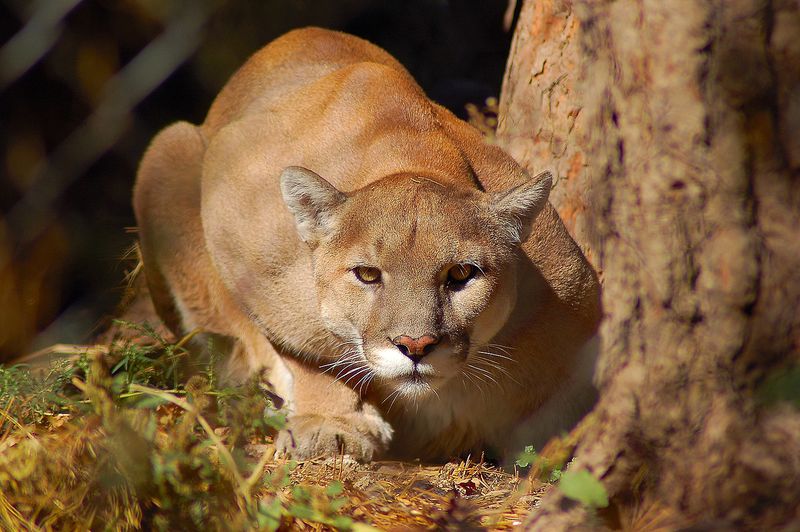
Discovering a fresh kill site, with blood and signs of struggle, can indicate a mountain lion has recently hunted in the area. These sites are often hidden but can be found if you’re observant.
Mountain lions tend to cover their prey with debris to return later, so finding such evidence is a clear warning.
Leave the vicinity immediately and notify local wildlife authorities if possible. Ensure you travel in groups and maintain a loud presence to deter the mountain lion from approaching or considering you as a threat.
Presence of Cubs
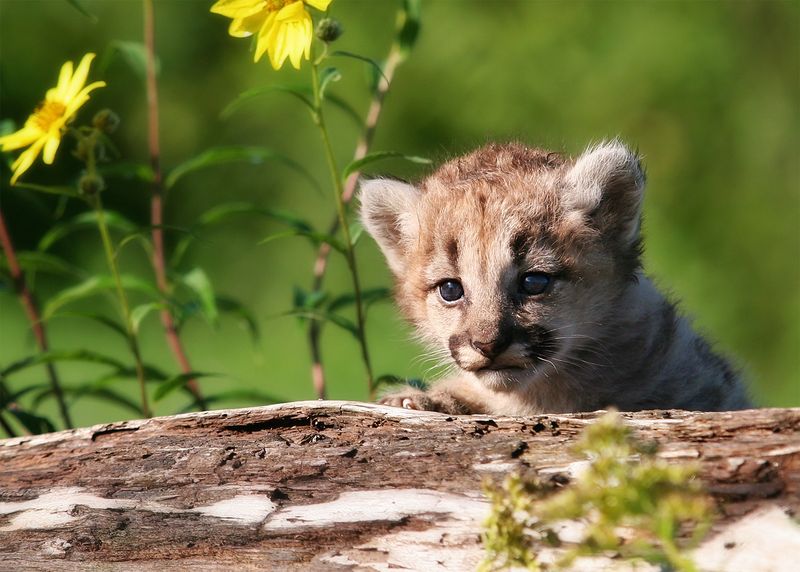
Seeing a mountain lion cub is a sign to exercise extreme caution. Where there are cubs, a protective mother is usually nearby. Cubs might wander from their hiding spots, so encountering one means you should leave immediately.
Mother mountain lions are highly protective and can become aggressive if they feel their young are threatened.
If you spot a cub, back away slowly without turning your back on the area. Maintain a calm demeanor and avoid making sudden movements that might provoke a defensive response from the mother.
Increased Bird Activity
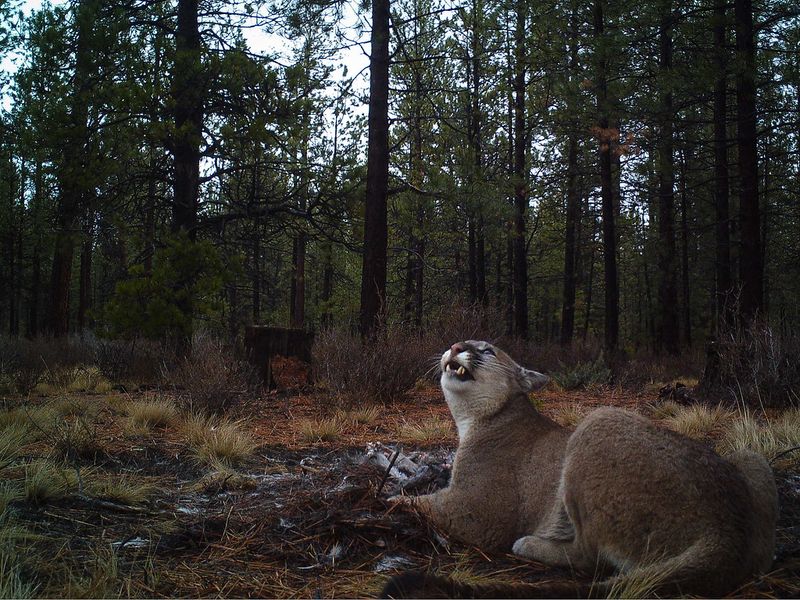
Birds can act as natural alarms in the presence of a predator. If you notice an unusual burst of bird activity, such as sudden take-offs or loud calls, it might indicate a mountain lion nearby.
These reactions are often triggered by the presence of a large predator moving through the area. Observing this can give you a crucial heads-up about potential danger.
Stay on marked trails and remain observant. Making continuous noise and traveling in groups can help ward off any unexpected encounters with mountain lions.
Distinctive Smells
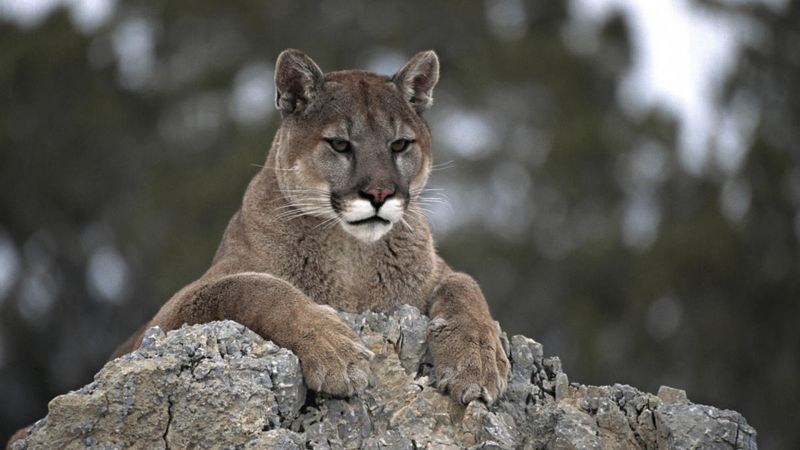
A sudden, strong musky odor might suggest a mountain lion’s presence. These cats use scent to mark their territory, leaving behind a distinctive smell that can warn you of their proximity.
If you detect such a smell, it’s a sign to be cautious and aware of your surroundings. Avoid venturing further into areas where the smell is strongest.
To stay safe, make noise by talking or clapping to announce your presence. This can deter the mountain lion from approaching and reduce the likelihood of a surprise encounter.
Unseen Movement
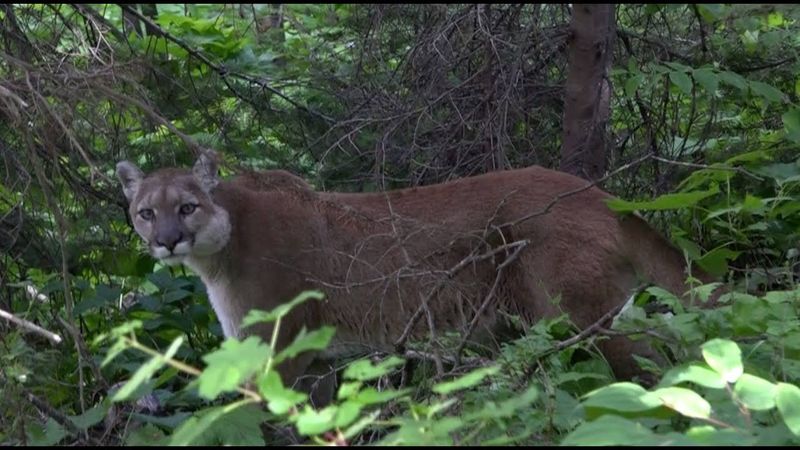
Occasionally, you might sense unseen movement in the underbrush or hear rustling noises that suggest a large animal is nearby. Such movements can indicate a mountain lion lurking in the vicinity.
These big cats are masters of stealth, often moving silently through dense vegetation. If you suspect a mountain lion is close, remain calm and avoid making sudden movements.
Travel in groups and make yourselves appear larger by standing close together and speaking loudly. This behavior can help prevent the mountain lion from approaching too closely.

